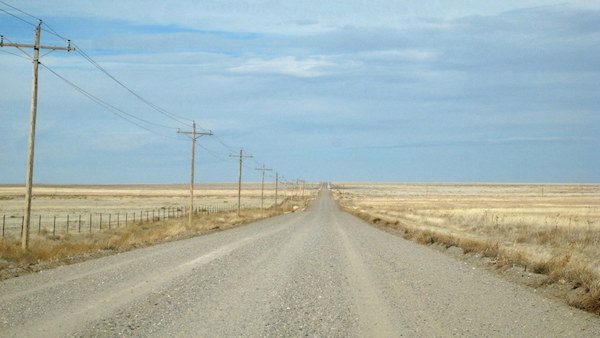Good things often come in small packages. A surprisingly delightful cozy catastrophe can be found in Ray Bradbury’s short story “The Highway”, which appears in his 1951 short story collection The Illustrated Man.
The story is very short, only seven pages, and basically has no plot. However, don’t be fooled. Bradbury, by a masterful use of character portrayal, tells a very effective story. In fact, the story is a perfect illustration of Bradbury’s dictum: create your characters, let them do their thing, and that’s your plot.
I am going to forego summarizing the story because I don’t see anyway to do so without giving away the ending, which would be a shame if you wish to read this delightful and thought-provoking little tale. I will point out why I think this story falls into the cozy camp and in doing so give you a bit of a feel for the story.
The Catastrophe
First of all, the catastrophe is quick and there is little discussion of it. A nuclear war has occurred.
The Amateur
The main character, Hernando, lives on his farm with his wife near a river and a road. The road is a main north-south highway, but isn’t a freeway. From the description, we are safe to assume it is a two lane road. One on which lots of tourists travel.
Where Hernando lives exactly is not specified. But because Bradbury also makes clear Hernando’s first language is Spanish, we can again assume his farm is probably in Mexico or Central America.
Contrary to the so-called cozy stereotype, Hernando is not middle-class, nor British. It’s obvious he’s poor. He has a burro and a wooden plow. His wife grinds corn with a block of lava rock. Aside from his farm, the highway provides him with important things which enable him to live apparently somewhat comfortably. The highway provides him money from tourists who want to take his picture, it’s provided him with a shiny hubcap that he and his wife use for a bowl, and the highway provided him with a tire, which he cut up to use for the soles of his shoes.
Clearly, not all cozy catastrophes are about middle-class British blokes who hate the working class.
The Setting
The setting is recognizable. It is a rural place south of the US border. The story focuses on Hernando and his wife. He is going about his everyday tasks when the disaster hits. What tips him off to something going on, is the highway has no cars on it. Something big has happened.
A Survivable World
Suddenly, a stream of cars appears all going north and when the stream is finally gone a lone old Ford shows up that’s overheating. Hernando fills the radiator with water and finds out from the young people in the car a nuclear war has happened. And then the car drives off. What is obvious, there is no sign of the calamity where Hernando lives and we can assume his little corner of the world is survivable.
A New World
The only point I see which might disqualify the story as a cozy catastrophe is the hope of building a better world out of the ashes of the old. For Hernando and his wife, there are no ashes and life goes on. Which is a point Bradbury liked to make: our modern world is too complex and too fragile and isolates us from the simple pleasures of living an uncomplicated existence. So, in a way, for Bradbury, Hernando’s world is the desired new world.
One can, of course, argue something must be survivable for all the cars to have headed north into the war zone. If the US had been totally obliterated, why go there?
The story, though, is about Hernando and for him there is no other world than the one he has always lived in.
Conclusion
In this seven page story, master storyteller Ray Bradbury tells a tale which uses the cozy catastrophe format to tell us a story of the value of simple living.
The tale is very much worth reading and I encourage you to do so. Add a copy of The Illustrated Man to your library. You won’t regret it.
Comments are always welcome. Until next time, happy reading!
Share This!

